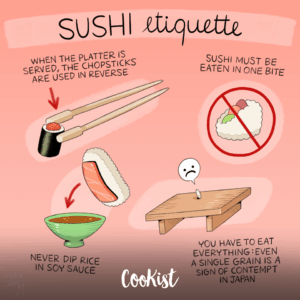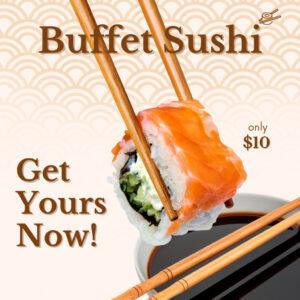Creating a recipe book isn’t just about compiling your favorite dishes; it’s about preserving culinary memories, sharing your passion, and crafting a legacy for generations to come. This comprehensive guide, inspired by the insightful articles on *Blog Name*, will take you through every step, from initial brainstorming to the final, beautifully bound product. Remember, as *Blog Name* always emphasizes, “A recipe book is more than a cookbook; it’s a story told through taste.” Let’s begin your culinary storytelling journey!
Part 1: Planning and Preparation
1. Defining Your Recipe Book’s Focus
Before you even think about writing down a recipe, decide on the book’s overall theme. Will it focus on:
- Family recipes passed down through generations?
- Your signature dishes, showcasing your unique culinary style?
- Recipes from a specific cuisine or region?
- Dishes for a particular diet, like vegetarian, vegan, or gluten-free?
- Seasonal recipes tailored to specific times of the year?
- Baking recipes exclusively?
- A combination of different styles?
A well-defined focus will help you stay organized and ensure a cohesive final product.
2. Gathering Your Recipes
Now comes the fun part! Start collecting your recipes. This might involve:
- Digging through old family recipe cards.
- Gathering recipes from cookbooks and magazines.
- Testing and perfecting your own original creations.
- Asking family and friends for their favorite recipes.
Remember to meticulously note the source of each recipe. This is crucial for attribution and avoiding copyright issues.
3. Recipe Testing and Refinement
Don’t just blindly copy recipes. Thoroughly test each recipe before including it in your book. Make adjustments as needed to ensure the recipe is clear, accurate, and produces delicious results. This is especially important for recipes you’ve inherited, as measurements and techniques may need updating.
4. Choosing a Structure
How will you organize your recipes? Consider these options:
- By Cuisine: Group recipes by their origin (e.g., Italian, Mexican, French).
- By Course: Organize recipes by course (e.g., appetizers, main courses, desserts).
- By Ingredient: Group recipes based on a key ingredient (e.g., chicken, pasta, chocolate).
- By Season: Arrange recipes according to the time of year they’re best suited for.
- By Occasion: Categorize recipes for specific events (e.g., holidays, parties).
The best structure will depend on your book’s theme and focus.
Part 2: Writing Your Recipes
5. Consistent Recipe Formatting
Maintaining consistency in your recipe formatting is crucial for readability. Use a standard format that includes:
- Recipe Name: A clear and descriptive title.
- Yield: The number of servings the recipe makes.
- Prep Time: Time needed for preparation.
- Cook Time: Time needed for cooking.
- Ingredients: Listed in a clear, concise manner, with measurements specified accurately.
- Instructions: Step-by-step instructions that are easy to follow, using clear and concise language.
- Notes: Any additional tips, variations, or substitutions.
6. Clear and Concise Language
Use precise and unambiguous language when writing your recipes. Avoid culinary jargon that a beginner might not understand. Be specific with measurements and instructions.
7. Accurate Measurements
Accuracy in measurements is paramount. Use standard measuring units (cups, tablespoons, teaspoons, grams, ounces) consistently throughout your book. For baking recipes, precision is particularly vital.
8. High-Quality Photography (Optional)
While not mandatory, high-quality photos of your dishes can significantly enhance the visual appeal of your recipe book. Consider investing in a good camera and learning basic food photography techniques.
Part 3: Design and Layout
9. Choosing a Design Style
The design of your recipe book should reflect its overall theme and personality. Consider using a style that complements your recipes’ aesthetic.
- Modern and Minimalist: Clean lines, simple fonts, and a focus on functionality.
- Rustic and Charming: Handwritten fonts, vintage-inspired graphics, and a warm color palette.
- Elegant and Sophisticated: High-quality photos, elegant fonts, and a luxurious feel.
10. Selecting Fonts and Colors
Choose fonts that are easy to read, both for the recipe titles and the instructions. A clear and legible font is crucial. Select colors that complement your chosen design style and create a visually appealing layout.
11. Page Layout and Organization
Organize your recipes logically, using headings, subheadings, and white space to break up the text and make it easy to navigate. Consider using different font sizes and styles to emphasize key elements.
12. Incorporating Visual Elements
Enhance your recipe book’s visual appeal with relevant images, graphics, or illustrations. This could include photos of finished dishes, drawings of ingredients, or decorative borders.
Part 4: Production and Publication
13. Proofreading and Editing
Before you finalize your recipe book, meticulously proofread and edit every recipe and every page. Check for any typos, grammatical errors, or inconsistencies in formatting. A fresh pair of eyes can be incredibly helpful here.
14. Choosing a Printing Method
There are several ways to print your recipe book:
- Print-on-demand services: Convenient and cost-effective for small print runs.
- Self-publishing platforms: Offer greater control over design and formatting.
- Professional printing companies: Ideal for large print runs and high-quality results.
15. Binding Options
Consider various binding options to ensure your recipe book is durable and easy to use:
- Perfect binding: A common method for books with many pages.
- Saddle stitch binding: Suitable for smaller books or booklets.
- Spiral binding: Allows the book to lie flat.
16. Adding a Personal Touch
Consider adding a personal touch to your recipe book, such as:
- A personal introduction or preface.
- Family photos or anecdotes related to the recipes.
- A handwritten dedication.
- A custom cover design.
Creating a recipe book is a labor of love, a testament to your culinary passion. By following these steps, you can transform your kitchen creations into a cherished keepsake – a cookbook that tells your unique culinary story. As *Blog Name* reminds us, “The best recipes are those that are infused with heart and soul.”


